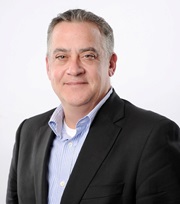David Hess

Professor
Post-Doctoral Fellowship – Western University (Robarts Research Institute), Washington University School of Medicine (St. Louis)PH.D. Western University
B.Sc. Western University
Office: Robarts Research Institute
p. 519.931.5777 x. 24152
f. 519.931.3789
e. dhess@robarts.ca
Visit: TheHessLab.com
Academic Journey
I graduated from Western University with a bachelor’s degree in pharmacology. I then went on to complete my PhD here as well. I completed 2 postdoc fellowships which were each 3 years in length. My first postdoc was at the Robarts Research Institute which is where my lab is now, and my second postdoc was at the Washington University School of Medicine in St. Louis, Missouri where I was in the regenerative medicine program. In my first postdoc, we discovered that transplantation of bone marrow cells into mice with diabetes can induce beta cell regeneration. I was interested in using human bone marrow cells for diabetes therapy and for the regeneration of blood vessels as 80% of diabetic patients die from cardiovascular complications (heart attacks or strokes). Hence, the regeneration and repairing of blood vessels by transplanted bone marrow cells was my focus in my second postdoc. At first, I was interested in trying to determine the stem cell types involved in revascularization, however, now I am looking more towards the regenerative mechanisms and designing protein mixtures from stem cells which can impact regenerative processes without needing to transplant the cells back into the person.
Why Science (or Why Research)?
When I was 15 years old, I had bone marrow transplant from my brother to treat aplastic anemia, and at this point, I wanted to go into something to do with medicine or oncology or stem cell therapy. I knew from an early age I wanted to do something in this area. At first, I wanted to go to medical school, but I was not accepted after fourth year, and I then decided to go to graduate school. 1 year into my master’s program, I decided that this was the path for me, and I wanted to continue with research. I transferred into my PhD and completed all my graduate training after this.
Research/Teaching Goals
The overarching goals in the Hess lab are to develop regenerative medicine strategies that serve as a therapy for diabetes and ischemic cardiovascular disease. We have always looked at diabetes, first starting with type 1 diabetes and we have slowly moved into type 2 diabetes, but always looking the use of stem cells to stimulate endogenous regenerative processes and how the disease impacts cardiovascular comorbidities.
Specific Research Interests
1) A specific research interest in the Hess lab is to combine islet replacement and regenerative strategies in the treatment of Type 1 Diabetes using stem cell-generated biotherapeutics to suppress autoimmunity and improve neoislet function.
2) The Hess lab has also shown that certain novel pharmaceutical agents are able to reverse the diabetes/obesity-induced vascular regenerative cell exhaustion (VRCE) which then restored blood vessel repair in these individuals.
3) We have Collaborated with Dr. Lauren Flynn (bioengineer) at Western University and we have grants together looking at decellularized adipose tissues as scaffold to combine the different cell types to construct blood vessels. This entails bioengineering new blood vessels in the lab using stem cells.
Undergraduate Teaching:
4520B: Stem Cell Biology and Regenerative Medicine (Course Coordinator)
4980: Seminar and Research Project (4th year thesis) (Supervisor)
4930F: Interdisciplinary Thinking and Research Literacy in Medical Sciences (Instructor)
Graduate Teaching:
9553: Translational Research (Bench to Bedside) (Course Coordinator / Instructor)
Most Rewarding Moments
I had early success as a post-doc publishing a paper highlighted on the cover of Nature Biotechnology (Bone marrow heals the pancreas) which launched my career. This manuscript published in 2003 while I was a PDF was most instrumental in allowing me to launch a productive independent research program. More recently, I have been working in a new area on the concept of regenerative cell exhaustion in patients with chronic cardiometabolic disease (obesity and/or diabetes). These individuals demonstrate reduced ability to repair blood vessels because of metabolic abnormalities that impact hematopoietic cells in the bone marrow which are usually released into the bloodstream that then go on to repair and regenerate blood vessels. We have been able to show that patients with Type 2 Diabetes have about a 2-fold increase in vascular regenerative cell exhaustion than sex and age matched individuals without Type 2 Diabetes. We have then implemented drug therapies to reverse this phenotype and restore the circulating stem cells coming from the bone marrow. This paper was published in Cell Metabolism in 2023 which I believe is my biggest translational impact.
Advice to Students
I love what I do, and I think it is the best career. It is very diverse, I interact with a lot of intelligent people, I get to train students, and I get to be involved in translational research that can and does impact therapies for diseases that we don’t have cures for today. My advice to graduate students is to not be afraid to spend the time it takes to get where you need to be. This will allow you to run your own program and research and try to make an impact on human health and treatments.
Interests Outside of Academia
Since I was a kid, I have played hockey and continue to do so at Western University. This is the biggest hobby that I still play. Other than that, a lot of my time is devoted to my kids and family. When I’m not in the lab, I am at dance practice, horseback riding lessons and gymnastic meetings which takes up a lot of my time and energy.
Awards and Recognitions:
MacDonald New Investigator Award from the Heart and Stroke Foundation (2009)
Sheldon H. Weinstein Chair in Diabetes Research at the Schulich School of Medicine and Dentistry, Western University (2017-present)
Faculty Scholar Award at Western University (2024)
Highlighted Publications:
See Publications by David Hess on PubMed








